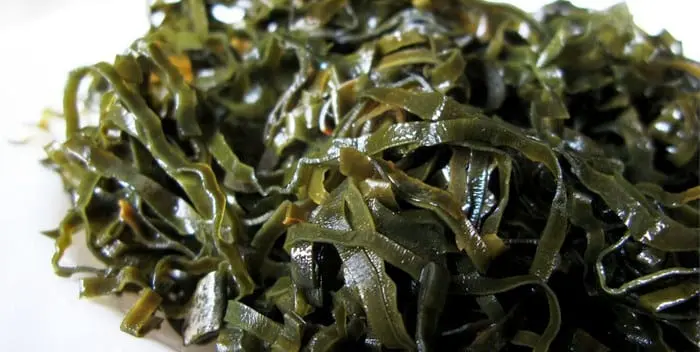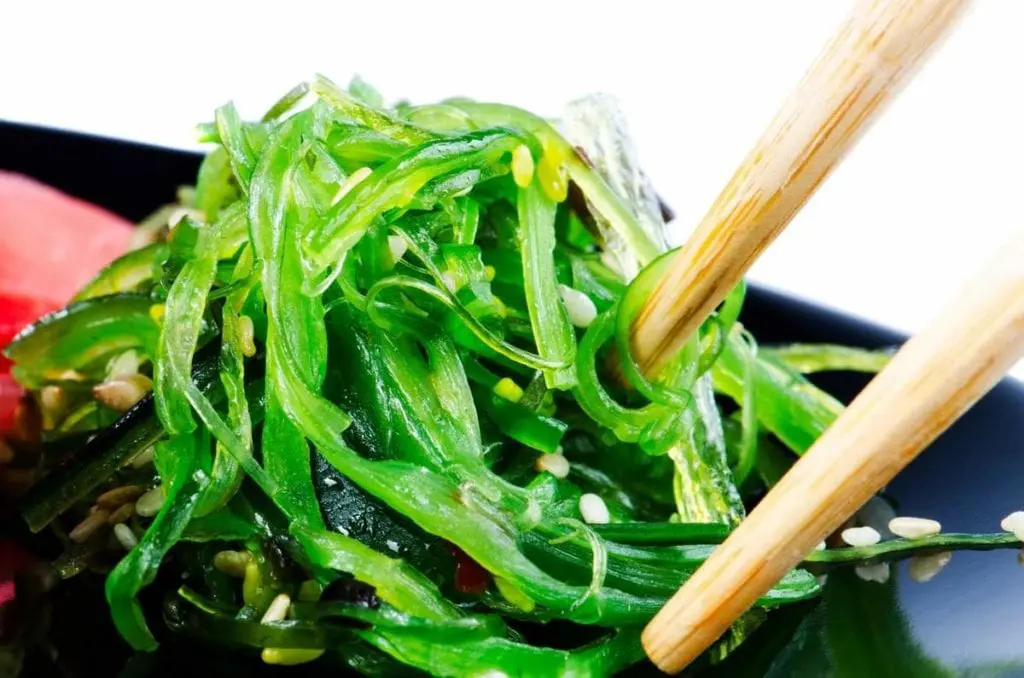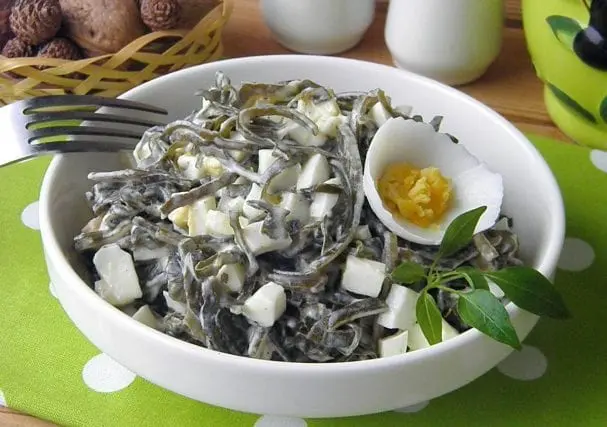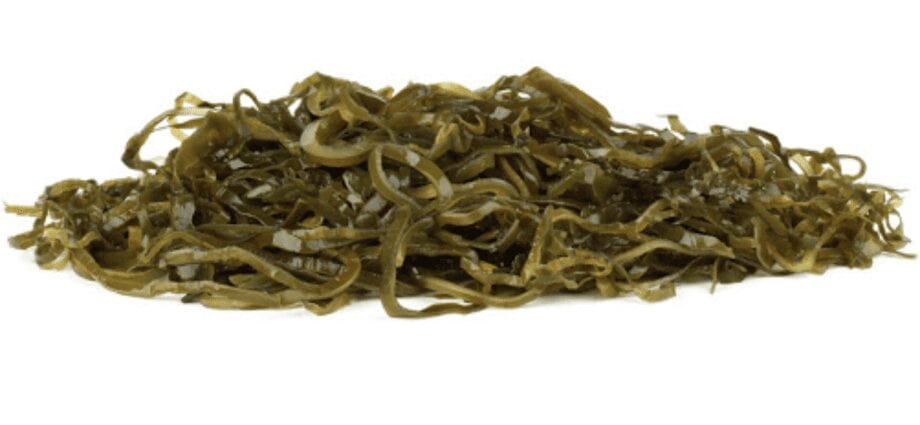Contents
Description
Seaweed or kelp is a very healthy and low-calorie product that is rich in iodine. Most of the inhabitants of our country are very fond of seaweed and add it to salads, eat it in dried or canned form.
Seaweed is actually not usual plant, but kelp, which people have long adapted to eat and use as a medicine. What is the use of seaweed, what is its composition and properties and in what cases it can harm the human body, find out in our article.
History of seaweed

Today, there are a large number of foods that are low in calories but have tremendous benefits for our body. These products include seaweed.
Laminaria grows at a depth of 10-12 meters and belongs to the class of brown algae. Seaweed grows in the Japanese, Okhotsk, Kara, White Seas, in the Atlantic and in the Pacific Ocean.
They first learned about seaweed in Japan. Today this country is the leader in the production of kelp.
In Russia, seaweed appeared in the 18th century. It began to be used not only in cooking, but also in medicine. Kelp on the territory of our country was discovered by members of the Bering expedition and began to be called “whalebone”.
Nowadays, of the known 30 types of seaweed, only 5 types are used in cosmetology, medicine and cooking.
Composition and calorie content

The composition of seaweed includes alginates, mannitol, protein substances, vitamins, mineral salts, trace elements. Laminaria is rich in vitamins A, C, E, D, PP and group B. All micro- and macroelements necessary for humans are easily absorbed from the kelp.
- Caloric content 24.9 kcal
- Proteins 0.9 g
- Fat 0.2 g
- Carbohydrates 3 g
The benefits of seaweed
Seaweed is rich in many vitamins and minerals that are essential for human health. According to its composition, kelp contains a lot of iodine, vitamins A, groups B, C, E and D. This product contains enterosorbent substances that, like a sponge, draw out toxins, toxins and harmful bacteria from the body.
Doctors recommend using kelp for thyroid diseases, for the prevention of cancer, for the normalization of metabolic substances.
Thanks to the fatty acids in seaweed, atherosclerosis can be avoided.
For a nutritionist, first of all, seaweed is valuable for its high iodine content. The need for iodine increases in the growing body of children, in people with active mental and physical activity, pregnant women and during lactation.
And also in patients with dysfunction of the thyroid gland – hypothyroidism. Organic iodine from kelp is better absorbed than synthetic iodine-containing preparations.
Do not forget the contraindications of kelp – this is a hyperfunction of the thyroid gland, when hormones are produced in excess.
As for the choice of seaweed, I recommend fresh or dried. Pickled seaweed loses all its beneficial properties and can even become unhealthy if stored in plastic packaging.
Harm of seaweed
Despite the fact that seaweed is rich in nutrients, it has a number of contraindications:
- for people with hyperthyroidism, seaweed is contraindicated;
- not recommended for eating with hemorrhagic pathologies. Seaweed has a pronounced laxative effect;
- high absorbency. Before buying, you need to find out where the algae was caught, because it can accumulate toxins. Such kelp will only harm the body.
- if you have allergic reactions.
Application in medicine

Seaweed contains a storehouse of nutrients. That is why doctors pay due attention to it.
With the daily use of the permissible amount of algae, a person’s general well-being improves and the metabolism is restored.
According to the research results, it became known that seaweed prevents the appearance of cancer.
Due to the content of antioxidants, with constant use in food, kelp perfectly rejuvenates the body and removes harmful substances.
Brown algae is shown to people of “big cities”. Indeed, due to a lack of iodine in the body, the thyroid gland begins to suffer.
Seaweed is excellent for constipation. Fiber, which is not contained, gently affects the intestines and regulates stool.
Laminaria is indicated for pregnant women. Due to the bromine content, the psychological state of the expectant mother will always be stable. Brown algae contains folic acid, which is also necessary for women in position. Before you start using kelp, be sure to consult your doctor!
Cooking applications
Seaweed has a rather specific taste and smell due to iodine. But nevertheless, it is very often added to salads, eaten in the form of canned food, dried and boiled. It goes well with seafood, poultry, mushrooms, eggs and various vegetables.
Salad with seaweed and egg

Ingredients
- Canned cabbage – 200 gr;
- Canned peas – 100 gr;
- Boiled egg – 4 pcs;
- Parsley – 10 gr;
- Sour cream 15% – 2 tbsp
- Salt and pepper to taste.
Preparation
Cut the eggs into cubes and place in a salad bowl. Add cabbage, peas, parsley and sour cream to the eggs. Mix well. Season with salt and pepper.
Garnish with black sesame seeds when serving.










